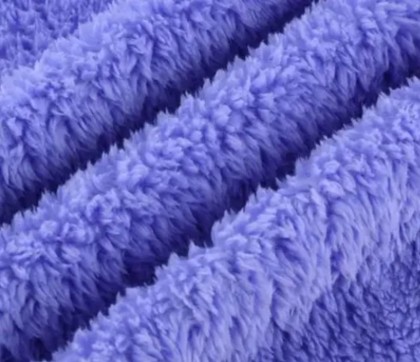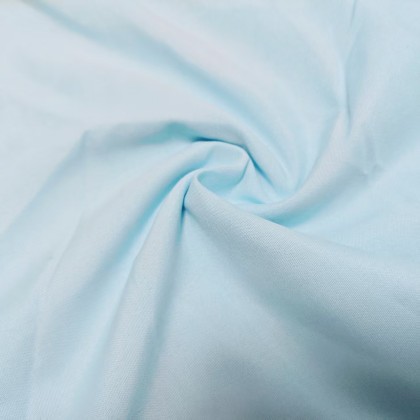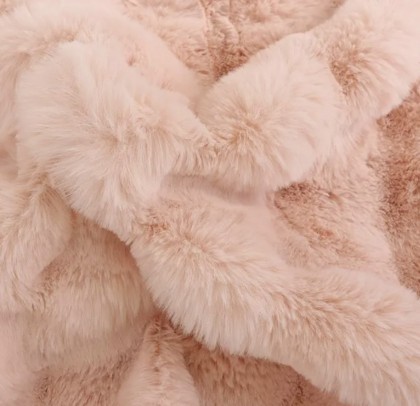Can you dye faux fur fabric? This is a common question among fashion designers, costume makers, and home textile crafters. Faux fur is beloved for its luxurious texture, cruelty-free nature, and wide range of applications—from runway-ready jackets to cozy home décor. But when it comes to customizing its color, many are unsure: Is it possible? Is it safe? Will it look good?
The short answer is: yes, you can dye faux fur fabric—but with certain limitations, techniques, and precautions. This article explores everything you need to know about dyeing faux fur, including types of fabric, appropriate dye methods, expert tips, and how trends like checkered faux fur fabric and eco-friendly faux fur fabric are impacting modern textile design.
Understanding Faux Fur Fabric: What Are You Dyeing?
Before diving into the dyeing process, it’s essential to understand what faux fur fabric is made of.
Faux fur is typically constructed from synthetic fibers such as:
Polyester
Acrylic
Modacrylic
Nylon
These fibers are woven or knitted onto a base fabric, often backed with a cotton-poly blend or synthetic mesh. Since synthetic fibers resist conventional dyes (such as those used on cotton or silk), dyeing faux fur fabric requires specialized methods.
In most cases, polyester faux fur—the most common type—cannot be dyed with regular fabric dye. Instead, it needs dispersed dyes or fabric paint methods that adhere to plastic-based fibers.
Can You Dye Faux Fur Fabric at Home?
Yes, but with caveats. Dyeing faux fur at home is possible, but requires:
The right type of dye (disperse dye or alcohol-based ink)
Proper heat control
Thorough testing on swatches
A ventilation-safe workspace
Patience and precision
It’s not as straightforward as dyeing natural fabrics like cotton or wool. That said, it can yield impressive, one-of-a-kind results—especially for small projects, color accents, or custom costume work.

Types of Faux Fur Fabric and Dye Compatibility
Different types of faux fur respond differently to dyes. Below is a comparison chart:
| Faux Fur Type | Fiber Base | Dye Compatibility |
|---|---|---|
| Polyester faux fur | Polyester | Disperse dyes or fabric paint |
| Acrylic faux fur | Acrylic | Alcohol-based dyes or acid dyes with care |
| Nylon faux fur | Nylon | Acid dyes or disperse dyes |
| Checkered faux fur fabric | Mixed synthetic | Patch test required – may vary |
Special Note on Checkered Faux Fur Fabric:
Due to the printed patterns and mixed fibers, dyeing checkered faux fur fabric is not recommended unless the goal is to alter the entire appearance. The pattern may blur or fade unevenly.
Choosing the Right Dye Method
Dyeing synthetic materials like faux fur requires specific techniques. Below are your best options:
1. Disperse Dye (for Polyester and Acrylic)
Requires boiling water or steam
Often used in commercial dyeing machines
Produces rich, permanent colors
Not ideal for heat-sensitive faux fur fibers
2. Fabric Paint or Dye Sprays
Good for surface color changes
Easier to control on dark gray faux fur fabric or multi-toned designs
Apply with airbrush, sponge, or spray bottle
Great for ombré or gradient effects
3. Alcohol-Based Dyes or Inks
Used for acrylic or nylon fibers
Offers vibrant, fast-drying results
Can be diluted for soft tone adjustments
Dyeing Faux Fur: Step-by-Step Process (Using Fabric Spray Method)
If you’re looking to dye faux fur fabric for clothing or custom accessories, here’s a beginner-friendly guide using fabric spray dye or paint:
Materials:
Light-colored faux fur (white or cream is best)
Alcohol-based fabric spray or acrylic textile paint
Gloves, mask, apron
Wide-tooth comb
Large workspace (ventilated)
Drop cloth or plastic cover
Instructions:
Test a Swatch First
Always test on a small, hidden section to check color intensity and fur reaction.Prep the Fabric
Shake out the fabric, and lay it flat. Use a comb to fluff the fibers.Apply the Dye Evenly
Spray lightly across the surface. Avoid soaking the base fabric. Work in layers.Brush and Blend
Comb through the fur while the dye is still wet to ensure even application and avoid stiffness.Dry Completely
Air dry thoroughly for 24–48 hours. Do not use heat—this can damage the synthetic fibers.Set the Color (Optional)
Use a fixative spray or fabric sealer for long-term wear, especially if used in faux fur fabric for clothing.
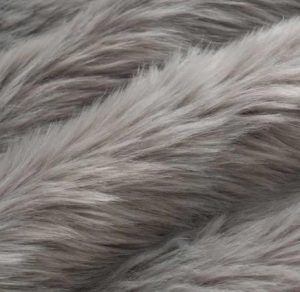
Challenges When Dyeing Faux Fur
Dyeing faux fur isn’t without challenges. Here are common issues and how to address them:
1. Color Doesn’t Adhere
Likely due to fiber incompatibility. Use appropriate dyes for synthetics.
Solution: Try alcohol-based or disperse dyes.
2. Fur Becomes Matted or Hard
Caused by oversaturation or heat exposure.
Solution: Use light layers and brush gently while drying.
3. Uneven Color Blotches
Result of spraying too close or not combing the dye through.
Solution: Maintain distance and work in small sections.
Popular Dyeing Applications
Here’s where faux fur dyeing shines in real-world use:
Fashion & Apparel
Designers use dyeing to add dimension to dark gray faux fur fabric, or custom-tone eco-friendly faux fur fabric for winter wear.
Costume Design
Think bold colors, neon effects, or layered fantasy designs—dyeing provides dramatic flair.
DIY Home Décor
Accent pillows, faux fur throws, or rugs get a refreshed look with a subtle tint or bold splash.
Children’s Clothing & Accessories
Because synthetic dyes are safer than some chemical counterparts, custom-dyed faux fur fabric for clothing used in kidswear (with caution) can offer playful personalization.
Dyeing vs. Buying Pre-Colored Faux Fur
While dyeing offers flexibility, sometimes it’s smarter to buy pre-colored or patterned options—especially for bulk manufacturing or cost-conscious projects.
Some alternatives include:
Dark gray faux fur fabric: Already styled, ideal for neutral wardrobes
Checkered faux fur fabric: Popular in jackets, hats, and bold fashion
Discount faux fur fabric: Lower-priced remnants available in many colors
Why You Might Skip Dyeing:
Complexity and time
Potential damage to fabric
Availability of discount faux fur fabric that fits your color needs
Eco Considerations: Can You Dye Eco-Friendly Faux Fur Fabric?
Many manufacturers today promote eco-friendly faux fur fabric, made with recycled polyester, low-impact dyes, or biodegradable backings.
When dyeing such materials, take care not to compromise their environmental integrity:
Avoid solvent-based dyes
Use plant-derived or low-impact dyes when possible
Consider professional services with certified dye practices
Better yet, buy eco-friendly faux fur in the color you need to avoid unnecessary processing.
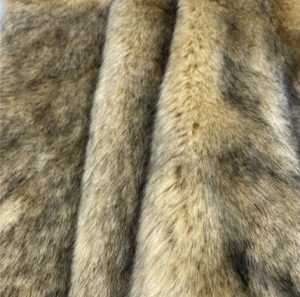
Commercial Dyeing: For Large-Scale Use
Fashion brands or fabric mills that need to color faux fur in bulk should partner with a professional dyeing house that specializes in synthetic materials.
Benefits include:
Controlled temperature environments
Industrial-scale disperse dye vats
Colorfastness guarantees
Fiber integrity maintenance
Post-Dyeing Tips: How to Maintain Dyed Faux Fur
Once you’ve successfully dyed your faux fur:
Avoid washing in hot water
Spot clean with a damp cloth
Avoid high heat or dryers
Store in breathable bags to avoid crushing the pile
For garments, professional dry cleaning is best.
Is It Worth Dyeing Faux Fur?
So, can you dye faux fur fabric? Yes, with the right tools, dye type, and preparation. For designers looking to experiment or crafters wanting customization, it’s a rewarding technique that opens doors to creative expression.
But it’s not for every project. Weigh your time, fabric cost, and the availability of alternatives like discount faux fur fabric, eco-friendly faux fur fabric, or pre-dyed dark gray faux fur fabric before committing.
If you’re new to dyeing, start with a small swatch, use proper ventilation, and embrace the process—faux fur dyeing is as much art as it is science.

